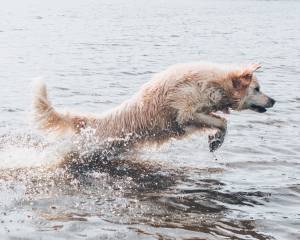
Recognizing a Seizure
Seizures in dogs can manifest in different ways. Your dog may experience convulsions, muscle twitching, drooling, loss of consciousness, or unusual behavior. It’s crucial to identify these signs to provide the best care for your pet. Some seizures in dogs last only a few seconds, while others can persist for several minutes. Regardless of the duration, witnessing your dog in this state can be deeply distressing.
Immediate Actions During a Seizure
If your dog is having a seizure, there are specific steps you should take immediately. First, try to remain calm. While it’s difficult, your composure can help your dog feel more secure. Ensure that your dog is in a safe space where they won’t injure themselves. Remove any nearby objects that could harm them during the seizure. It’s important to avoid touching your dog during the seizure as they may inadvertently bite or snap due to confusion and disorientation.
After the Seizure
Once the seizure has ended, your dog may experience a period of disorientation, confusion, or temporary blindness. It’s important to speak to your dog in a soothing and reassuring tone. Provide a quiet and comfortable place for them to rest. Ensure there are no sharp objects or hazards in the vicinity. After the seizure, it’s advisable to contact your veterinarian and schedule a check-up to determine the cause of the seizure and discuss potential treatment options.
Understanding the Causes
Seizures in dogs can be caused by various factors, including epilepsy, exposure to toxins, brain tumors, infections, or other underlying health issues. It’s essential to work with your veterinarian to identify the cause of the seizures and develop a suitable treatment plan. In some cases, blood tests, imaging studies, or other diagnostic procedures may be necessary to determine the underlying cause.
Seeking Veterinary Care
If your dog experiences a seizure for the first time, or if the frequency and intensity of the seizures increase, it’s crucial to seek veterinary care promptly. Your veterinarian can conduct a thorough examination, recommend appropriate tests, and provide guidance on managing your dog’s condition. Additionally, they can discuss potential treatment options, including medication or dietary changes to help manage the seizures effectively.
Supporting Your Dog
As a pet parent, witnessing your dog endure a seizure can be emotionally challenging. Providing a supportive and nurturing environment for your dog is crucial during this time. Ensure they have access to fresh water and a comfortable resting place. Monitor their behavior closely and note any changes or unusual symptoms to report to your veterinarian during your dog’s check-up.
In conclusion, witnessing your dog have a seizure can be a distressing experience, but knowing how to respond can make a significant difference in your pet’s well-being. By recognizing the signs of a seizure, taking immediate action, and seeking veterinary care, you can provide the best support for your beloved companion. Remember, while seizures in dogs can be concerning, with proper care and attention, many dogs can live happy and fulfilling lives despite this condition.






